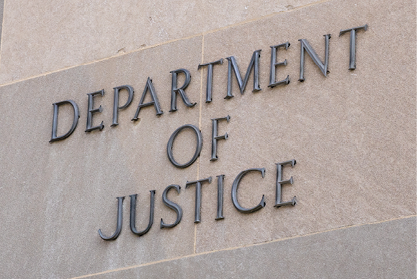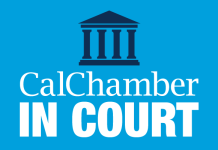 Recently, the U.S. Department of Justice (DOJ) sent a memorandum to all federal agencies providing guidance for federal-funding recipients on applying federal antidiscrimination laws to diversity, equity and inclusion (DEI) programs.
Recently, the U.S. Department of Justice (DOJ) sent a memorandum to all federal agencies providing guidance for federal-funding recipients on applying federal antidiscrimination laws to diversity, equity and inclusion (DEI) programs.
Though this memo is directed primarily toward federal-funding recipients, it may be helpful for all private employers, who are covered by federal law, as it provides several examples of unlawful policies and programs.
As previously reported, the current federal administration has increased its scrutiny of DEI programs — issuing executive orders targeting what were referred to as “illegal” DEI initiatives.
The Equal Employment Opportunity Commission (EEOC) subsequently issued employer guidance, which helped to clarify some uncertainty the executive orders created and provided some helpful examples of the types of DEI policies and practices the EEOC could find unlawful.
Memorandum
Like the EEOC’s guidance, the DOJ’s memorandum reinforces that DEI programs must comply with federal antidiscrimination laws — such as Title VII of the Civil Rights Act — and that employers and other entities covered by federal antidiscrimination laws must ensure that their programs and activities do not discriminate on the basis of any protected characteristics, regardless of the program’s “labels, objectives, or intentions.”
The DOJ provides several examples of the types of policies and programs it describes as unlawful, including:
- Granting preferential treatment based on protected characteristics. Programs that create advantages or disadvantages based on protected characteristics are presumed unlawful unless they meet very narrow exceptions. This includes programs such as race-based programs or scholarships, preferential hiring or promotion practices, and access to facilities or resources based on protected characteristics.
- Prohibited use of proxies for protected characteristics. Employers may not use neutral criteria that they consider as a substitute for protected characteristics. DOJ’s guidance examples include recruitment efforts targeting specific geographic areas, inquiring into candidates’ “cultural backgrounds,” “lived experience,” “cross cultural skills,” or requiring “diversity statements” from candidates.
- Segregation based on protected characteristics. Organizations may not use protected characteristics when organizing programs, activities and resources. This may include, for example, race-based training sessions, segregation in facilities or resources, or implicit segregation through program eligibility, such as a DEI workshop where individuals are asked to identify with protected characteristics.The memorandum notes an exception to impermissible segregation in the form of “sex-segregated intimate spaces.” The DOJ says failing to maintain sex-separate spaces, “rooted in biological differences” and disregarding gender identity, such as restrooms, showers, locker rooms or lodging, can violate federal law. This, however, is contrary to California law. Under California’s Fair Employment and Housing Act, all employees have the right to use a restroom or facility that corresponds to the employee’s gender identity or gender expression, regardless of the employee’s assigned sex at birth.
- Use of protected characteristics in candidate selection. The DOJ reiterates that entities cannot consider any protected characteristics when considering candidates for employment, contracts or program participation. This includes using “diverse slate” policies in hiring under which interview slates must include a minimum number of candidates from protected groups, or any policy using anything resembling benchmarks or quotas based on protected characteristics.
- Training programs that promote discrimination or hostile environments. Unlawful DEI training programs are those that stereotype, exclude or disadvantage individuals based on protected characteristics.
Best Practices
The DOJ’s guidance also recommends best practices to help organizations comply with federal antidiscrimination laws, including:
- Ensure inclusive access to all workplace programs, activities and resources.
- Focus on the skills and qualifications directly related to job performance.
- Prohibit demographic-driven criteria, which may have a discriminatory influence on demographic representation.
- Document legitimate nondiscriminatory reasons for making employment decisions.
- Scrutinize neutral criteria to determine whether they are proxies for protected characteristics.
- Eliminate diversity quotas.
- Avoid exclusionary training — ensure trainings are open to all qualified participants, regardless of protected characteristics.
- Include nondiscrimination clauses in contracts to third parties and monitor compliance.
- Establish clear anti-retaliation procedures and create safe reporting mechanisms.
The DOJ’s guidance, like the EEOC’s guidance, isn’t groundbreaking, but it provides some helpful examples for employers with DEI initiatives. Employers with DEI initiatives should review the guidance and consult with legal counsel to ensure their programs comply with the law.
California employers should also keep in mind where the federal guidance differs from California law — most notably with respect to the use of restrooms and other facilities based on gender identity and expression.
Staff Contact: James W. Ward


